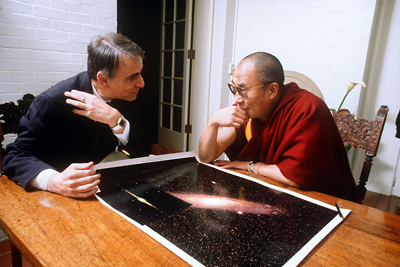Loosely translated as ‘discrimination of states’, ‘investigation of doctrine’, or ‘searching the Truth’, the principle of Dhamma vicaya has drawn comparisons to modern scientific and philosophical thought. Dhamma vicaya is the second of the ‘seven factors of awakening’ which are said to precede the actualisation of mindfulness. The principle motivates individuals to explore Nature, with special attention devoted to oneself. We become the objects of critical inquiry, just as nature is the subject of critical inquiry for the scientist.
It is not hard to see Buddhism as a combination of both speculative and scientific philosophy. In essence, it asks the questions, ‘What is the nature of the mind? And what is the nature of matter?’ These two questions are addressed in the hard sciences through Physics and Neuroscience. It also asks which, mind or matter, are of greater importance? Do our ideas of nature determine how nature manifests itself to us, or does nature determine our ideas of it? This debate of materialism vs. idealism is deeply rooted in Buddhism as much as it is rooted in Western philosophical thought, and is arguably still a matter of dispute.
The epistemological target of Buddhism is the self. And so, it is not surprising that metaphysically, Buddhism lends itself to more of an idealistic interpretation of the external world. That is, our ideas of nature determine how nature presents itself to us. The mind or consciousness precedes the physical. There is some science which is compatible with this idea. Wave-particle duality, how subatomic particle behavior can resemble both particles and waves simultaneously is still an enigma of science. The double slit experiment (check out Jim Al-khalili’s explanation on youtube) demonstrates that it is the observer who determines whether a particle acts as a wave, or behaves as a localised physical entity. In this case, it is the presence of a conscious being which determines how the material world manifests itself to us. This works well within the confines of an idealistic interpretation of nature.










